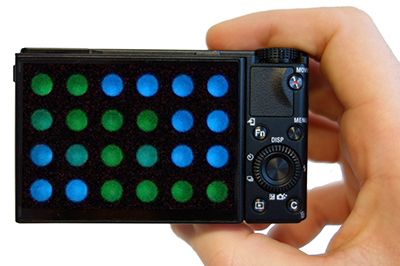FOR IMMEDIATE RELEASE
“Ouzo Effect Examined at the Nanoscale via Direct Observation of Droplet Nucleation and Morphology”
ACS Central Science

It sounds like a party trick: Add water to the clear, licorice-flavored ouzo liquor, and watch it turn cloudy. This “ouzo effect” is an example of an easy way to make highly stable emulsions — or mixtures of liquids that don’t like being together, like vinaigrettes — but nobody has yet fully understood how it works. Now, researchers report in ACS Central Science that the secret may lie in the unique structure of the emulsion’s droplets.
Ouzo is a popular liquor enjoyed throughout Greece, often served as an aperitif before a meal. Its “effect” happens because the anise extract used to flavor it is soluble in alcohol but not in water. So, when water is added to ouzo or other anise-flavored liquors, such as absinthe, the extract precipitates into tiny, light-scattering droplets that make the drink take on a murky, opaque appearance. But exactly how these beads of liquid achieve such high stability in ouzo without the addition of any other substances, aside from water, isn’t well understood. Knowing how this works could help manufacturers more quickly and easily create stable emulsions, such as cosmetics and paints, on a large scale. Previously, researchers had examined pre-formed ouzo droplets, but no one has yet been able to view them up-close as they form. So, Nathan Gianneschi and colleagues wanted to take a more detailed look at this effect by using a high-resolution microscopy technique known as liquid phase transmission electron microscopy (LPTEM).
The researchers formed droplets by slowly adding water to a simulated ouzo solution, then watched them grow using LPTEM. They found that rather than consistently getting bigger, the droplets tended to reach a certain size then increase in “intensity” instead, with a dark ring on the outside. The spheres formed an internal, bubble-like structure, with a large concentration of the anise extract at the edge, and water and ethanol in the center. Even using commercially available ouzo, the same behavior was observed, though the droplets were smaller. The researchers say that this first-of-its-kind work both establishes the utility of the LPTEM technique and could help create other highly stable emulsions.
The authors acknowledge funding from the Army Research Office, the National Science Foundation, the Packard Foundation, the American Association for the Advancement of Science, the Sloan Foundation, the Northwestern University Graduate Research Fellowship, the Dr. John N. Nicholson Fellowship, and Procter & Gamble.
###
The American Chemical Society (ACS) is a nonprofit organization chartered by the U.S. Congress. ACS’ mission is to advance the broader chemistry enterprise and its practitioners for the benefit of Earth and all its people. The Society is a global leader in promoting excellence in science education and providing access to chemistry-related information and research through its multiple research solutions, peer-reviewed journals, scientific conferences, eBooks and weekly news periodical Chemical & Engineering News. ACS journals are among the most cited, most trusted and most read within the scientific literature; however, ACS itself does not conduct chemical research. As a leader in scientific information solutions, its CAS division partners with global innovators to accelerate breakthroughs by curating, connecting and analyzing the world’s scientific knowledge. ACS’ main offices are in Washington, D.C., and Columbus, Ohio.
To automatically receive press releases from the American Chemical Society, contact newsroom@acs.org.
Note: ACS does not conduct research, but publishes and publicizes peer-reviewed scientific studies.






